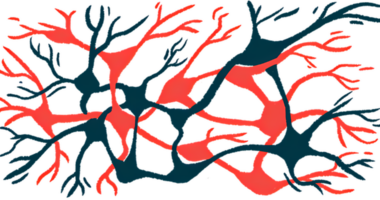Glial cell research centers opens at Case Western Reserve University
Ohio institute aims at treatments via deeper understanding of cells' types, roles

The Institute for Glial Sciences, a center dedicated to the role of glial cells in Parkinson’s disease and others affecting the nervous system with a goal of better treatments, is opening at Case Western Reserve University in Ohio.
It will be led by Paul Tesar, PhD, a professor in the department of genetics and genome sciences at Case Western’s School of Medicine, where the institute is located, and the Dr. Donald and Ruth Weber Goodman Professor of Innovative Therapeutics at the school.
Glial cells provide support, protection, and nutrition for nerve cells, also called neurons, ensuring their proper function. While they represent over half of the cells in the nervous system, few research centers are dedicated to studying their role in health and disease.
“The Institute for Glial Sciences is a manifestation of our collective aspiration to deepen the understanding of glial cells,” Tesar said in a university press release. “These integral components of our nervous systems have long been overshadowed, and through the Institute, we aim to shed light on their complexity, developing treatments that could revolutionize how we approach neurological care.”
Glial cells of the brain may be both protective and damaging in Parkinson’s
The institute will focus on three nervous systems: the central nervous system, which consists of the brain and spinal cord; the enteric nervous system, devoted to the control of the digestive system; and the peripheral nervous system, which comprises all nerves outside the brain and spinal cord.
Glial cells are present in each of these systems. Many aspects of these cells are well characterized, but the role of the different glial populations in health and disease — including Parkinson’s, Alzheimer’s disease, multiple sclerosis (MS), and cancer — is less known.
For instance, recent research suggested that the brain’s resident immune cells, microglia, can be both protective and damaging in Parkinson’s, depending on the disease’s stage.
In parallel with its research work, which includes developing new methods to study the different glial cells, the institute will focus on creating therapies that target these cells.
“As we announce the Institute for Glial Sciences, we’re not just launching a research center, we’re championing a vision,” said Stan Gerson, dean and senior vice president for medical affairs at the School of Medicine.
Previous studies by Tesar and his team delved into the complexities of glial cell dysfunction and how it contributes to neurological diseases. Their findings have led to potential therapies advancing in development for MS and Pelizaeus-Merzbacher disease, a rare and progressive central nervous system disorder characterized by the loss of coordination, motor abilities, and cognitive function, the university reported.
“The Institute for Glial Sciences aims to build from these accomplishments,” Tesar said, “propelling new breakthroughs in glial science and offering new hope for treatment of neurological diseases.”
Recruitment of institute faculty scientists and staff is underway.
“Philanthropy has been crucial in advancing our work to this stage, and will continue to play an even more important role as we expand to impact more patients,” Tesar added.







